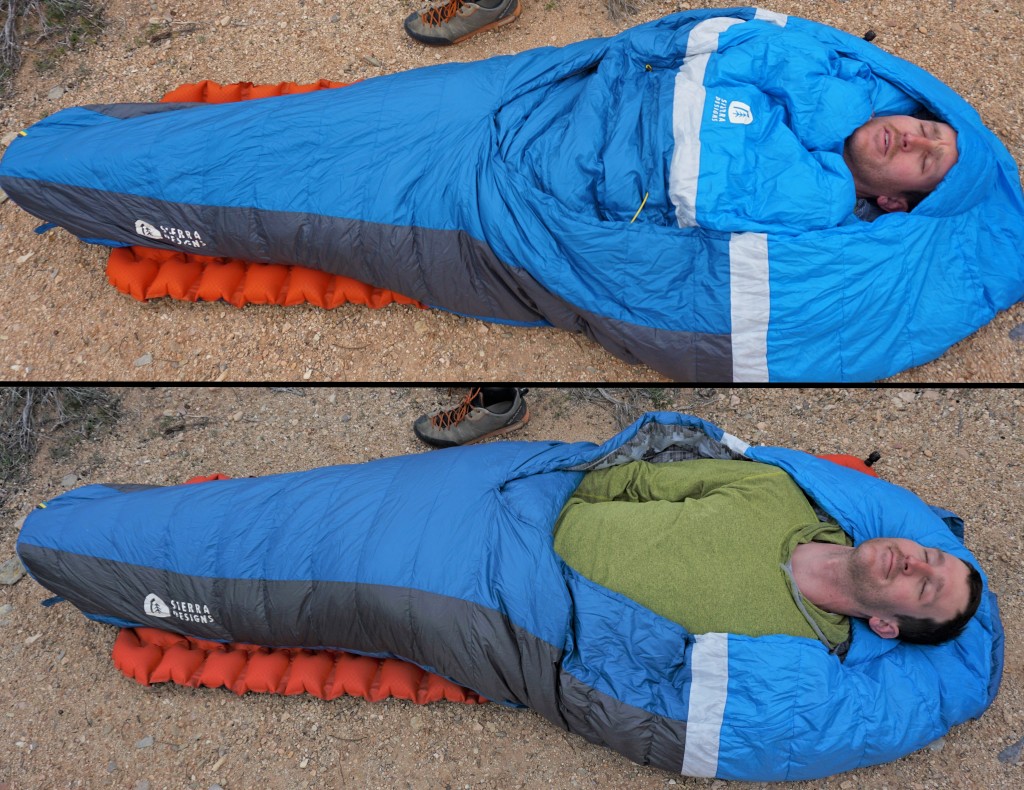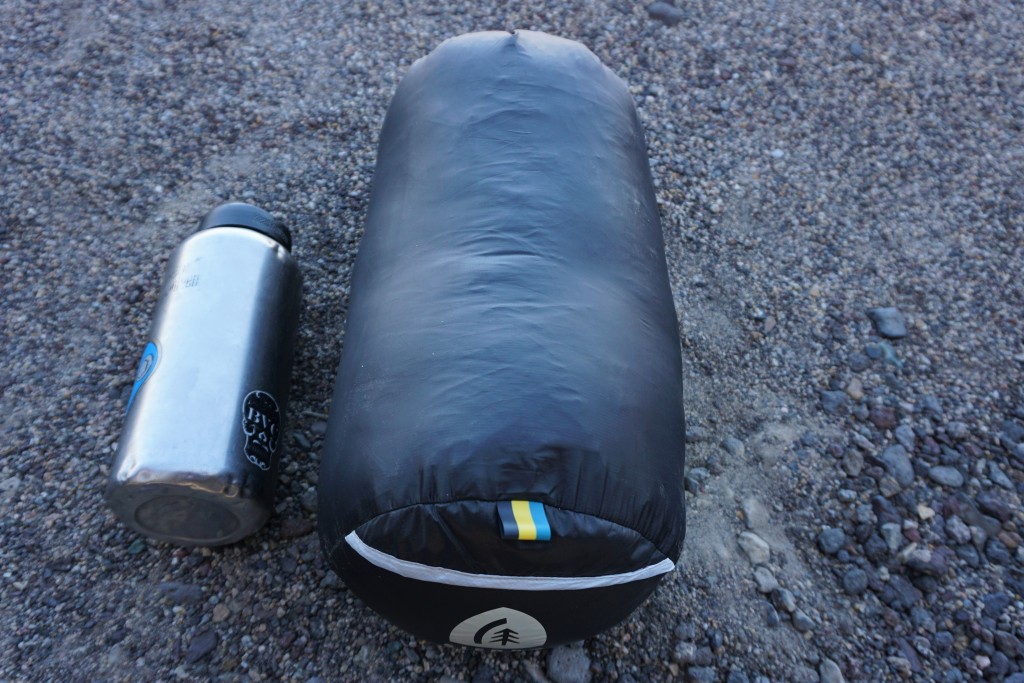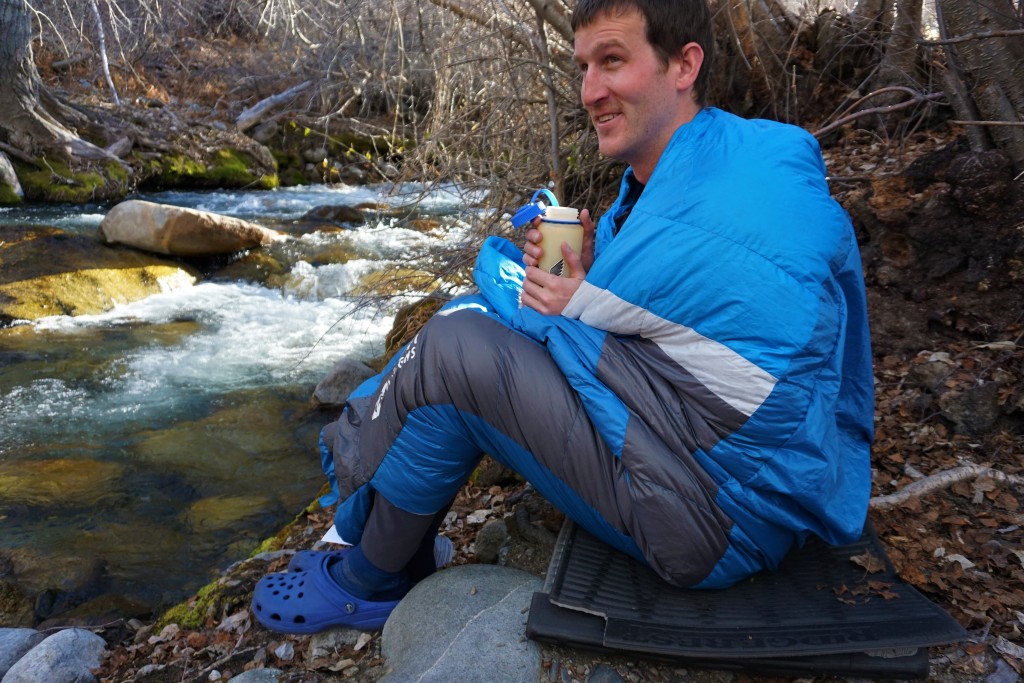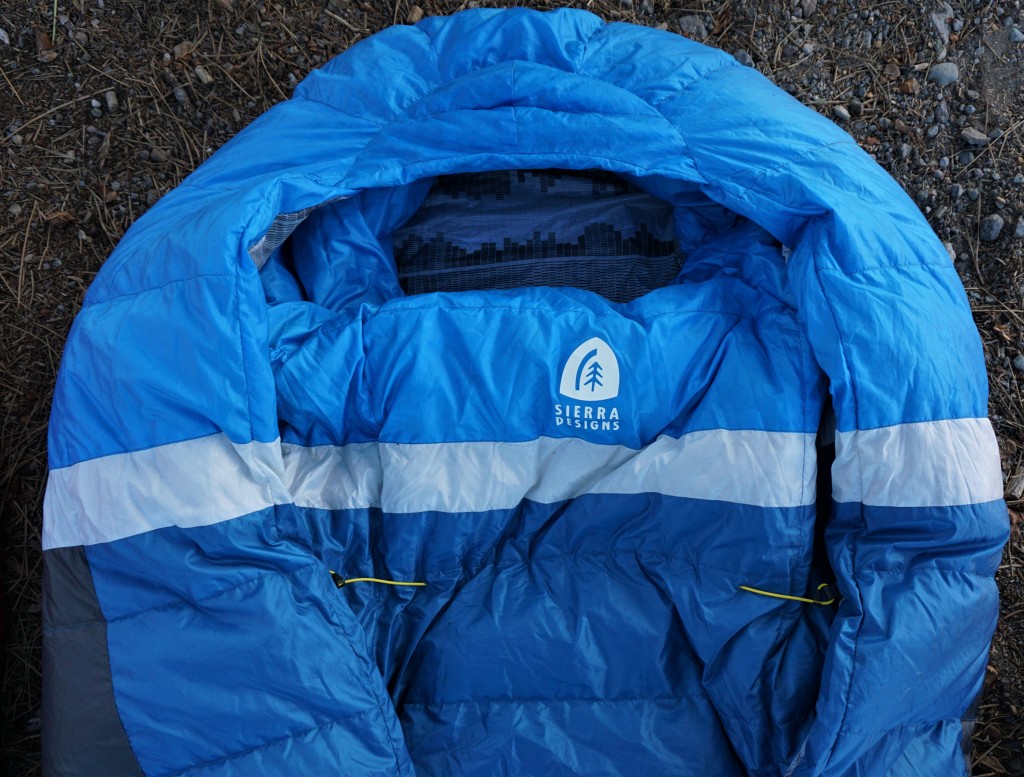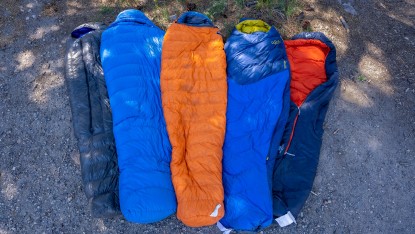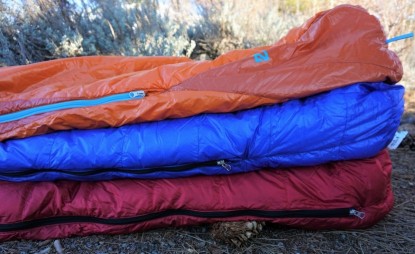Sierra Designs Backcountry Bed 700 Review
Our Verdict
Our Analysis and Test Results
Performance Comparison
Warmth
Although Sierra Designs gives the version of the Backcountry Bed we tested a temperature rating of 35°F, it receives a 27° lower limit rating on the industry-standard EN test. Our review team thinks the higher 35° manufacturer rating feels more appropriate. This is partly due to there not being an effective way to close the bag fully. In the latest version, an elastic cord has been added to help keep the bag's comforter flap in place. This cord, however, is too long to let you pull the thicker insulation on the sides of the bag together for extra warmth on cold nights.
An additional warmth issue is that the bag lacks a way to cinch the hood around your head. Both of these design flaws contributed to our reviewers describing the Backcountry Bed as unpleasantly drafty. Shoppers should also be aware that to save weight there is no insulation on the underside of the bag in the area of the sleeping pad sleeve. A good sleeping pad is thus essential for staying warm near this bag's temperature limit.
For all of these reasons, we would only recommend the 35° version of this bag for warmer 3-season applications. For colder nights in spring and fall, there is a 20° version that on paper features more insulation, but appears to have the same closure issues.
Weight
We weighed a size long on our scale at 2.10 pounds. Considering its mediocre warmth, this suggests a below average warmth-to-weight ratio. We think this is likely due to the extra materials that are needed for its luxurious comforter closure.
Whereas other sleeping bag makers have often developed zipperless designs to reduce a bag's weight, it is important to recognize that this isn't the case with the Backcountry Bed.
Comfort
As its name suggests, this bag is designed to bring the comfort of your normal bed to the wilds of the backcountry. In this mission, it is highly successful. The main comforter flap that's used to close the bag nearly achieves the feel of an ordinary blanket. In addition, the bag's spacious interior dimensions help it avoid the constrictive feel that's common in classic mummy bags.
Most of our testers really like these features and appreciated the bed-like feel they achieve. Other testers, however, complained that the zipperless closure created chilly drafts that were less than comfortable. Due to this disagreement, it's hard to rate this bag's overall comfort objectively. Ultimately, we chose to give it a top-score on comfort, but with that caveat that some will likely find other designs more comfortable.
Compared to other designs with think the Backcountry Bed is best for tummy sleepers or anyone that's always disliked traditional sleeping bags.
Packed Size
In our tests with an after-market compression sack, the Backcountry Bed packed down to an impressive 7.3 liters in volume. This is smaller than average, but larger than some bags that supply similar levels of warmth.
This bag also comes with a simple drawstring stuff sack that isn't very good at compression. To achieve the compressed volume that we report you will need to acquire a third-party compression sack. If you're willing to do that, the packed size difference between this and other quality backpacking sleeping bags is minor enough that it probably doesn't need to factor in to your decision.
Versatility
The Backcountry Bed is suitable for a wide variety of sleeping styles, supplying a high-level of comfort whether you sleep on your back, side, or stomach. This bag, however, does not supply a similarly high level of comfort across a wide range of conditions or applications.
Like all down bags, it will lose its ability to insulate if it gets wet. The zipperless design also restricts you're venting options. This partially solved with the built-in foot vent, but there were situations were our testers' legs got sweaty even with the foot vent open. Finally, the lack of insulation near the sleeping pad sleeve necessitates that you use a good sleeping pad to stay warm. Many backpackers won't consider this a problem, but it may be for hammock or portaledge sleepers.
Features and Design
Our testers preferred the closure flap on the Backcountry Bed over other zipperless designs. Side sleepers, in particular, favored The centered comforter on the Backcountry Bed compared to asymmetrical closures. Both designs, however, have negative consequences for warmth and weight.
The Backcountry Bed includes a useful elastic cord for keeping the comforter closed. Unfortunately, this cord is too short to close the bag tightly on cold nights. It also lacks an effective way to adjust to hood for improved comfort or warmth. On the plus side, we like the foot vent because it gives you the option to sit in the bag while you make breakfast on cold mornings.
Value
Evaluating the Backcountry Bed's value is tricky. Although its list price is toward the lower end of the backpacking sleeping bag category, its warmth and weight are as well. For roughly the same price you can get there are other warmer and lighter offerings. Most people, however, will find the Backcountry Bed to be vastly more comfortable. So if you can appreciate comfort in your sleeping bag, this bag still seems to offer a decent value.
Conclusion
This bag largely lives up to its name and is successfully at bringing the comfort of an ordinary bed to the backcountry. It accomplishes this by offering a roomy fit and zipperless closure that mimics the feel of your comforter at home. These benefits, however, come with significant drawbacks in warmth and weight. Nevertheless, if you've always found traditional mummy bags uncomfortable, the Backcountry Bed is a godsend.




